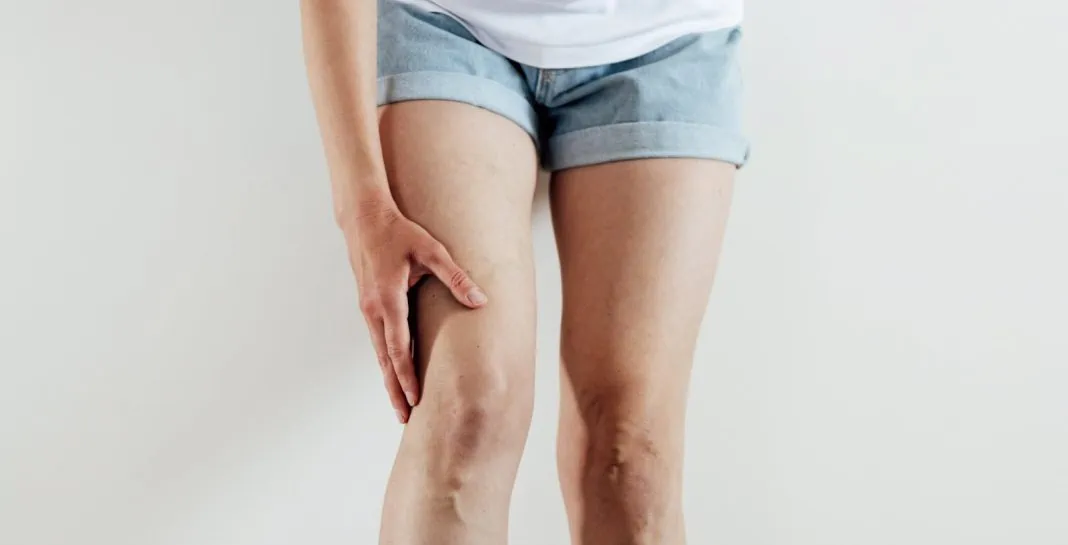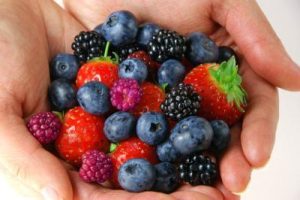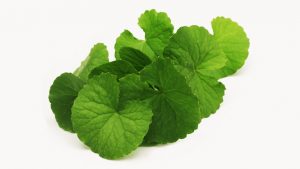I admit it, I care about my look, and I’m sure most people do. Besides the genes all of us inherit, our appearance is tightly linked to the state of our health. Unfortunately, our inherited genes also play an important role, making us prone to one health problem or another – without us having a say in the matter.
Varicose veins are a problem that affects a large number of women – the condition is especially prevalent in 20% of women over 65 years old and it’s estimated that 25% of all women and 10% off all men are affected. We can, of course, apply some prevention methods, particularly through a balanced way of life, both mentally and physically.
Having perfect legs has always been a goal for women everywhere and varicose veins are one of the most frequent problems many of us are forced to deal with at some point in our lives. So what can be done, if varicose veins become present, despite any prevention efforts?
There are several surgical and non-surgical methods to remove them, but still, new varicose veins can form after any of these procedures. There are quite a few natural remedies scientifically proven to reduce and slow down the appearance of varicose veins; you’ll have to be consistent and show some patience (like for any natural remedy), and if you do, results won’t fail to appear.
Causes and symptoms

Varicose veins are twisted, enlarged veins near the surface of the skin. The term commonly refers to the veins on the leg, although varicose veins can occur elsewhere. Normally, one-way valves in your veins keep blood flowing from your legs up toward your heart. When these valves do not work as they should, blood collects in your legs, and pressure builds up. The veins become weak, large, and twisted.
Some factors can increase the risk of having varicose veins:
- Pregnancy
- Obesity
- Age
- Standing for long periods
- Leg injury
- Menopause
- Chronic constipation
- Sedentary
Depending on the severity, the symptoms of varicose veins are :
- Mild swelling
- Appearance of the spider veins
- Itching skin in the affected area
- The sensation of heavy legs
- A dull ache in the area
- Dry skin
- Bleeding more than usual and a longer period to heal for minor injuries
- Skin discoloration in the affected area
- Ulcers
Efficient, natural remedies for treating varicose veins
The treatment of varicose veins is decided based on the severity of the condition and it can be surgical and non-surgical. Of course, there are natural ways to treat varicose veins, and while you won’t get instant results they are effective if you are consistent in using them.
Typically, the course of treatment has 2 goals: strengthen the veins and improve blood circulation.
The remedies listed here have little or no side effects when used appropriately, but I highly suggest you get the okay from your physician before taking any of them, especially if you’re pregnant, nursing, have diabetes, or any other chronic illness.
Also, if you already have an aggravated form of varicose veins, possibly with ulcers that bring great discomfort, you should definitely talk to your doctor and see what treatment options you have. Some of the remedies listed here may be unsuitable for external use, if you have any kind of skin lesions.
Vitamin C
You can help your body build connective tissue and shrink existing varicose veins by taking 2 to 3 grams of vitamin C and 400 to 800 IU (International Unit) of vitamin E daily.
Vitamin C helps to strengthen the walls of arteries, veins, and the microscopic blood vessels between arteries and veins, called capillaries. Vitamin C is best taken with flavonoids (potent antioxidants derived from plant pigments), which enhance how the body uses the vitamin.
Vitamin E helps blood circulation and fortifies blood vessel walls. It also works well in combination with vitamin C.
 Flavonoid-rich foods
Flavonoid-rich foods
Foods with high flavonoid content help reduce the risk of developing varicose veins and hemorrhoids because of their strengthening actions on the veins.
Blackberries, blueberries, cherries, plums, and blackcurrants are a rich source of flavonoids that are known for their ability to improve the function and integrity of the vascular system.
Horse chestnut extract (Aesculus hippocastanum)
It’s a well-known and widely used vein strengthener. The active compound is Aescin, which increases venous tone. Also it has anti-inflammatory and anti-swelling properties.
Horse chestnut is successfully used both internally and externally:
- Gels or creams that contain horse chestnut seed can be used on the affected area twice a day.
- Horse chestnut supplements are recommended in a dose of 300 mg twice a day.
Apple cider vinegar
The number of uses for apple cider vinegar seems almost hard to believe. Even so, it has a well-deserved place among the natural remedies for varicose veins. ACV improves circulation and blood flow, thus the swelling and heaviness of varicose veins will be reduced to a great extent.
Here’s how to use it inside and out:
- Every night before going to bed and every morning (for a few months), apply apple cider vinegar to the affected area and gently massage it (using upward strokes)
- Add 2 tablespoons of apple cider vinegar in a glass of water and drink this twice a day for at least one month – and get the added bonus of improved digestion in the process!
 Butcher’s broom (Ruscus aculeatus)
Butcher’s broom (Ruscus aculeatus)
Is used for relieving the pain and discomfort of varicose veins, because it contains an active compound named ruscogenin.
This compound has an important role in reducing inflammation and constricting the veins. Many supplements contain a combination of herbal extracts for treating varicose veins, in which Butcher’s broom is frequently included, but you can take it alone if you want to. In that case, you’ll have to take 100 mg of a Butcher’s Broom supplement 3 times a day.
Grape seed extract
Full of vitamin E, flavonoids, linoleic acid, and antioxidants, – Oligomeric Proanthocyanidin Complexes (OPCs), grape seed extract is very helpful for the treatment of the varicose veins. OPCs strengthen the blood vessels (capillaries, veins, arteries) and protects them from free radical damage. They also have a role in collagen formation along with vitamin C.
You can find grape seed supplements in form of capsules, tablets, and liquid extracts. Look for products that have an OPC content of not less than 95%. The recommended dose is 150 mg/day(or 50mg/3 times a day), and it will reduce pain, burning and swelling of varicose veins.
For external use, simply massage the area with grape seed oil to get the same benefits – the human skin is highly capable of absorbing the beneficial compounds.
Pine bark
Just like GSE, pine bark also contains the antioxidants known as OPCs. OPCs from the bark of maritime pine trees supports the connective tissues by inhibiting the enzymes that damage them and the vessel walls, but also increase venous tone.
If you want to use a pine bark supplement, you should take somewhere between 45-360 mg/daily or 50-100 mg – 3 times a day.
 Gotu Kola (Centella asiatica)
Gotu Kola (Centella asiatica)
Ayurvedic medicine has been using Gotu Kola since ancient times, but modern herbal medicine is definitely doesn’t shy away from this fantastic plant. It contains triterpenic acids that improve the tone of veins reduce pain, swelling, fatigue, and fluid leakage from veins.
You can make a tea using one tablespoon of Gotu Kola leaves, a cup of hot water, and, optionally, 1 tablespoon of honey. Add the leaves to hot water, steep for 10-15 min, strain and add honey if you like. Drink this tea 2-3 times a day.
If you want to take a Gotu Kola supplement, you should aim for about 60-180 mg of Gotu Kola extract per day.
 Witch hazel (Hamamelis)
Witch hazel (Hamamelis)
Witch Hazel is popular for its astringent properties, as it’s full of tannins, gallic acids, and essential oils. These compounds improve vein health and help tighten and repair swollen vessels, easing the pain and pressure they cause.
You can make tea and drink 1-3 cups every day, or a concentrated decoction to use as a cold compress applied on problem areas.
Tip: It also works when applied on painful, inflamed hemorrhoids.
You could also buy Witch hazel tincture and in this case I suggest following the instructions on the bottle for dosage, since tinctures can vary in strength from one manufacturer to another. There are lots of Witch hazel preparations containing isopropyl alcohol – you should never take those internally!
I know these days healthy living is considered “fashionable,” and many people readjust their whole diet and way of life just because some famous people did. In fact, if we come to think of it, there are plenty of small things we can do for our health that can have a surprisingly great impact. Drinking enough water and eating a fiber-rich diet can prevent chronic constipation, which is a risk factor for varicose veins (and also the dreaded hemorrhoids).
Walking is a great way to exercise and improves blood circulation in your legs. Another good habit is to take a 5-minute break every hour when standing or sitting for a long time. So, by introducing a few small habits in our daily routine, we can look and feel better without making a great effort or breaking the bank.
Thankfully, nature is a great source of remedies that are easy to use and find. So, let’s be positive and use what nature has to offer. A little bit more concern for our health can make the difference between a life of discomfort, cosmetic problems and pain and a healthy life in which we feel as good as we look.




